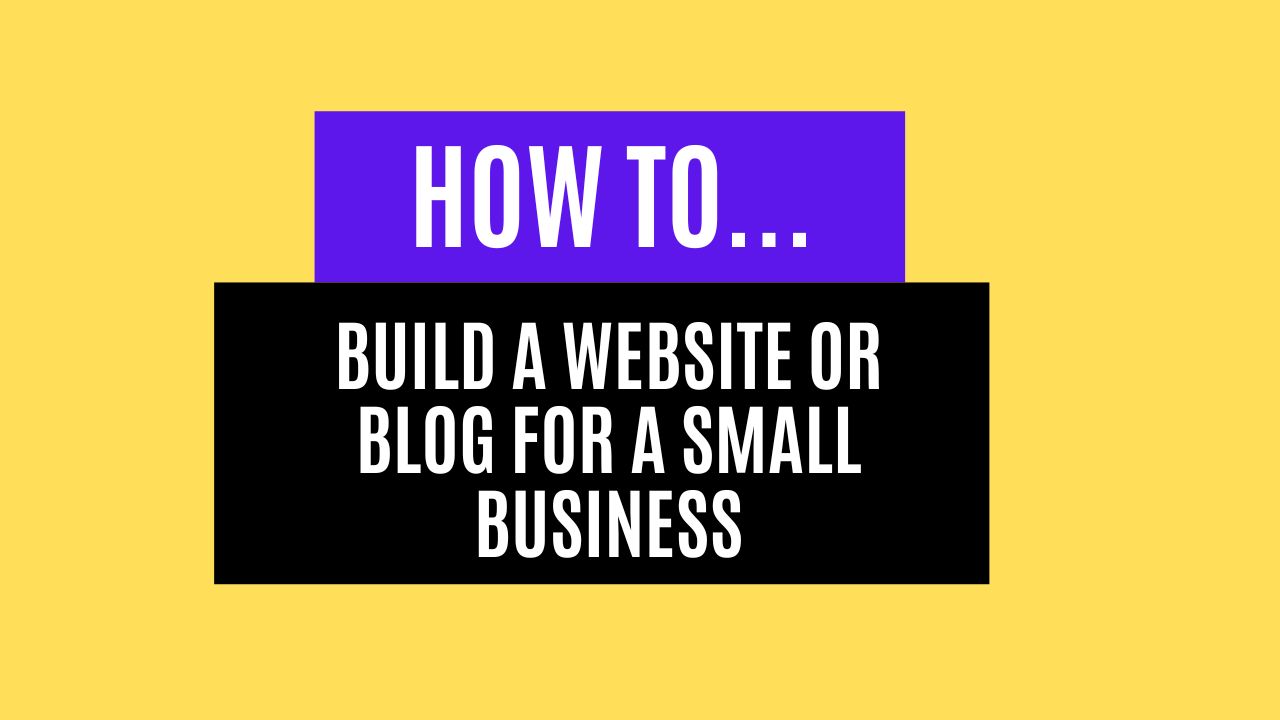In 2025, having a website or blog for your small business is more important than ever. The digital world is growing at an unprecedented rate, and customers are increasingly turning to the internet to find services, make purchases, and connect with businesses.
Having an online presence allows you to establish trust, share your expertise, and reach a broader audience.
Whether you’re just starting out or looking to upgrade your current site, this guide will walk you through the key steps to building a website or blog that works for your small business.
Why Your Small Business Needs a Website or Blog

In today’s marketplace, a website or blog isn’t just nice to have—it’s essential. Think of it as your digital storefront, open 24/7 for customers to browse and learn more about your products or services. A website provides the opportunity to reach new customers, share valuable content, and show off your expertise.
Blogs, specifically, are a great way to engage your audience. By publishing regular blog posts, you can share industry tips, personal stories, behind-the-scenes looks, and more. The beauty of a blog is that it’s an ongoing way to interact with your customers, provide value, and boost your visibility in search engines.
Step 1: Choose Your Domain Name and Hosting
The first step in building your website is to choose a domain name. This is your web address (e.g., www.yourbusiness.com), and it needs to be catchy, relevant to your business, and easy to remember.
After you’ve settled on your domain name, it’s time to choose a hosting provider. Hosting is the service that allows your website to be accessible on the internet.
There are plenty of hosting providers out there, including Bluehost, SiteGround, and HostGator. When picking a host, you’ll want to consider factors like speed, reliability, and the level of customer support offered.
If all the technical stuff sounds confusing, don’t worry. There are plenty of experts who specialize in setting up domains and hosting. They can help ensure everything runs smoothly from the start, so you won’t have to worry about the details.
Step 2: Choose a Website Builder or CMS
Once you’ve got your domain and hosting sorted, the next step is choosing a platform to build your website. There are a few popular website builders and content management systems (CMS) available that make the process relatively easy:
- WordPress: The most widely used platform for building websites. WordPress offers complete flexibility and customization with thousands of themes and plugins.
- Wix: Known for its easy drag-and-drop functionality, Wix is ideal for beginners and small business owners who want a quick, simple website.
- Squarespace: Great for creatives, Squarespace offers beautiful, professional templates that are easy to customize.
WordPress remains the most popular option for small businesses due to its versatility. You can easily scale your website as your business grows and have full control over your design and content.
Step 3: Pick a Template or Theme
Once you’ve chosen your platform, it’s time to select a theme or template. This is essentially the layout of your website—where things like your navigation bar, product pages, and blog posts will appear.
When choosing a theme, keep these points in mind:
- Simplicity: Choose a design that’s clean and easy to navigate. Avoid cluttered layouts that might confuse your visitors.
- Mobile Responsiveness: Make sure your theme looks great on mobile devices. More and more people browse the internet on their phones, so a mobile-friendly site is essential.
- Customization Options: Choose a theme that allows you to tweak colors, fonts, and layout to match your brand’s look and feel.
There are hundreds of free and paid themes to choose from, but remember: if you need a more custom look, you can always hire a designer to create a unique theme for you.
Step 4: Add Essential Pages to Your Website

Now that your design is in place, it’s time to fill in the content. Every small business website should have the following key pages:
- Home Page: This is the face of your business. It should introduce who you are, what you do, and provide a clear call-to-action, like a “Shop Now” button or “Contact Us” form.
- About Us Page: Tell your visitors your story—who you are, why you started your business, and what makes you stand out. A strong “About Us” page builds trust and helps visitors connect with your brand.
- Products or Services Page: This is where you showcase what you offer. Be sure to include detailed descriptions, high-quality images, and pricing. If you have many products, break them up into categories for easier navigation.
- Contact Page: Make it easy for people to get in touch with you. Include a contact form, email, phone number, and your physical business address (if relevant).
These core pages are the foundation of your website. When creating your content, focus on making it clear, concise, and valuable to your visitors.
Step 5: Optimize for Search Engines (SEO)
With your website live, it’s time to focus on SEO (Search Engine Optimization). SEO is the process of making your website more visible to search engines like Google. The higher you rank in search results, the more likely people are to find your website.
Here are some basic SEO strategies to get started:
- Keyword Research: Identify the terms and phrases your customers are searching for and include them in your content, particularly on your homepage, product pages, and blog posts.
- Optimize Images: Large image files can slow down your website’s load time, which can hurt your SEO. Be sure to compress your images without sacrificing quality.
- Write Catchy Titles and Descriptions: These appear in search results and can influence whether someone clicks on your site. Make them concise, engaging, and keyword-rich.
SEO can be tricky, but you can always turn to professionals for help. Whether you need help with keyword research or improving your site’s technical SEO, there are plenty of SEO experts who can guide you toward better search rankings.
Step 6: Add an E-Commerce Platform (If You’re Selling Products)
If you plan to sell products directly on your website, you’ll need to integrate an e-commerce platform. You have several options, including:
- Shopify: A popular platform for building online stores. It’s easy to set up and offers everything you need to manage inventory, accept payments, and ship products.
- WooCommerce: A plugin for WordPress that turns your site into a full-fledged online store.
- Wix and Squarespace: Both have e-commerce solutions built-in, perfect for small business owners who want a simpler setup.
When setting up an online store, you’ll need to ensure your payment gateway is secure, your shipping options are clear, and your products are easy to browse. If you’re unfamiliar with the process, hiring an e-commerce expert can save you time and effort in building a smooth shopping experience for your customers.
Step 7: Promote Your Website or Blog
After all the hard work you’ve put into building your website, it’s time to share it with the world! Promoting your site is key to attracting visitors and turning them into customers.
Here are a few ways to promote your website:
- Social Media: Share your blog posts, products, or services on platforms like Facebook, Instagram, and Twitter to drive traffic back to your site.
- Email Marketing: Collect emails through your website and send newsletters or promotional offers to keep your audience engaged.
- Google Ads or Social Ads: If you’re willing to invest a little in paid advertising, running ads on Google or social media can help boost traffic to your site.
Marketing is an ongoing process, so make sure you regularly update your website with fresh content and keep promoting it through all available channels.
Or… Hire a Professional To Do Everything For You!

If any of this sounds overwhelming or you simply don’t have the time to manage it all, there are professionals who can help at every step of the way.
Platforms like Fiverr allow you to hire experts who can assist with web design, content creation, SEO, e-commerce setup, and more. Whether you need someone to write your website copy, optimize your site for search engines, or design custom graphics, Fiverr is a great resource to find affordable and skilled freelancers.
Or you could even get someone to build an entire website for you from start to finish.
With the help of experts, you can build a professional website or blog without stressing over the details. It’s a cost-effective way to get high-quality work done, allowing you to focus on growing your business instead of getting bogged down in the technicalities.
Conclusion
Building a website or blog for your small business in 2025 is a must if you want to stay competitive and reach a wider audience.
By following these steps—from choosing a domain name and hosting to optimizing your content for search engines—you can create a strong online presence that showcases your business in the best possible light.
And remember, if you need help along the way, there are plenty of professionals who can guide you through the process. Whether you’re a DIYer or prefer outsourcing, the resources are out there to help you succeed.
So, what are you waiting for? Start building your online presence today!

